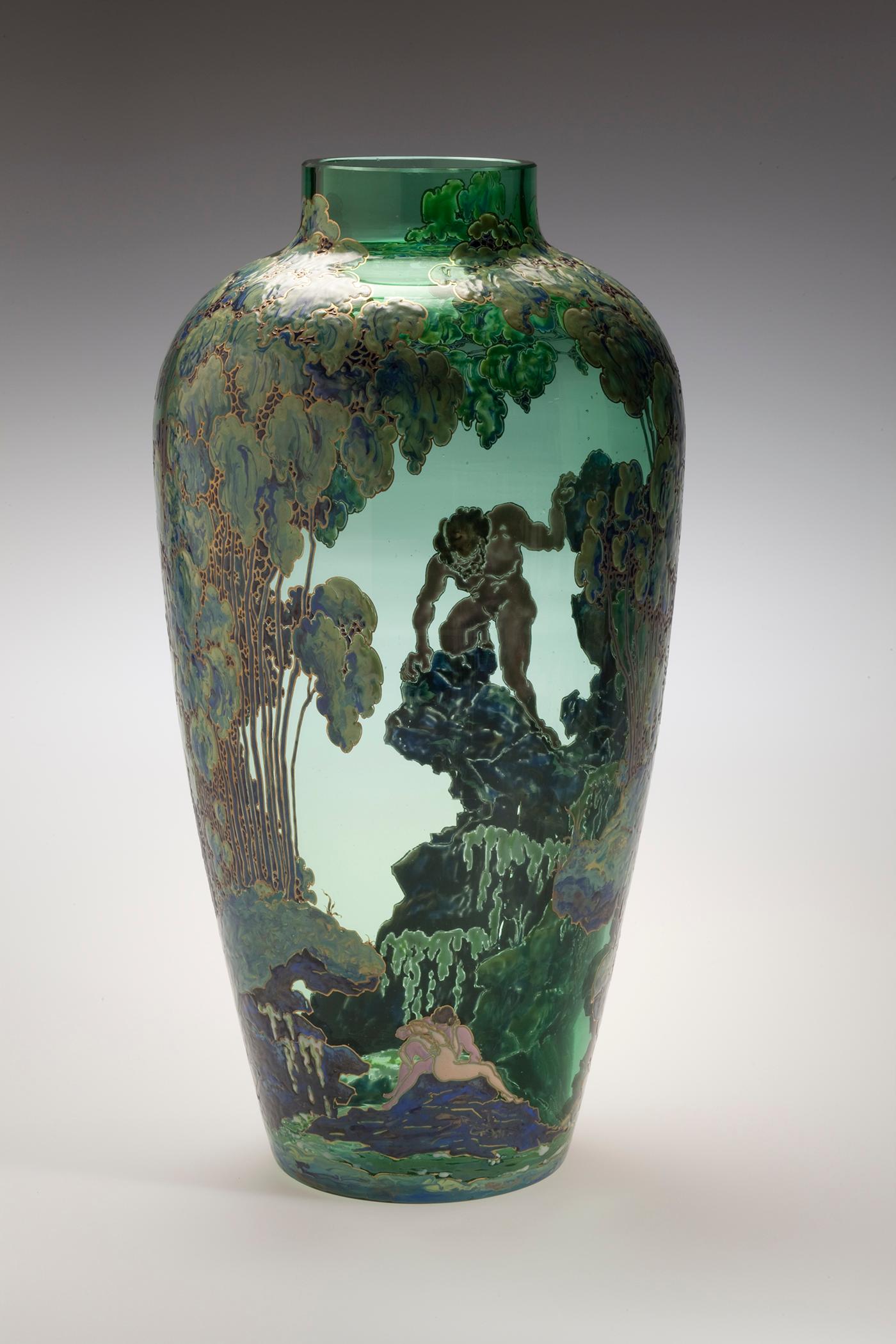Polyphemus Discovers Acis and Galatea Vase
Artist: Nicolas Constantin Platon-Argyaridès (French, 1888-1968)
Date: about 1925-1930
Dimensions:
H: 17 1/4 in. (43.8 cm); Diam: 9 in. (22.9 cm)
Medium: Transparent green glass; mold-blown, cut and polished, painted with opaque polychrome enamels and gold paint.
Classification: Glass
Credit Line: Purchased with funds from the Libbey Endowment, Gift of Edward Drummond Libbey
Object number: 2006.15
Label Text:Nicolas Platon-Argyriadès was trained as a painter, ceramicist, and enameler, and this unusual vase showcases his talents. The scene is derived from Greek mythology. Acis, the son of the wild god of woods and fields, Pan, falls in love with the sea nymph Galatea. When the giant cyclops Polyphemus, also in love with Galatea, discovers the lovers, he kills Acis with a rock in a jealous rage. Galatea transforms the blood streaming from Acis into a river and turns him into a rivergod, rendering him immortal. Platon treated the subject like a stage set, setting the scene in a shady grotto whose craggy rocks are covered with waterfalls and mossy vegetation; a canopy of trees towers overhead. The grotto shelters the lovers, who are resting on a rock near a blue stream. Platon cleverly utilizes the transparency of the glass in his composition: Polyphemus watches Acis and Galatea “through” the glass from his position on the opposite side of the vase.
DescriptionThe transparent baluster-shaped vase has a short, straight neck, which is ground and polished. The continuous frieze in opaque enamel depicts the lovers Acis and Galatea on one side and the giant Polyphemus perched on an outcrop above on the opposite side amid a rocky landscape.
On view
In Collection(s)




